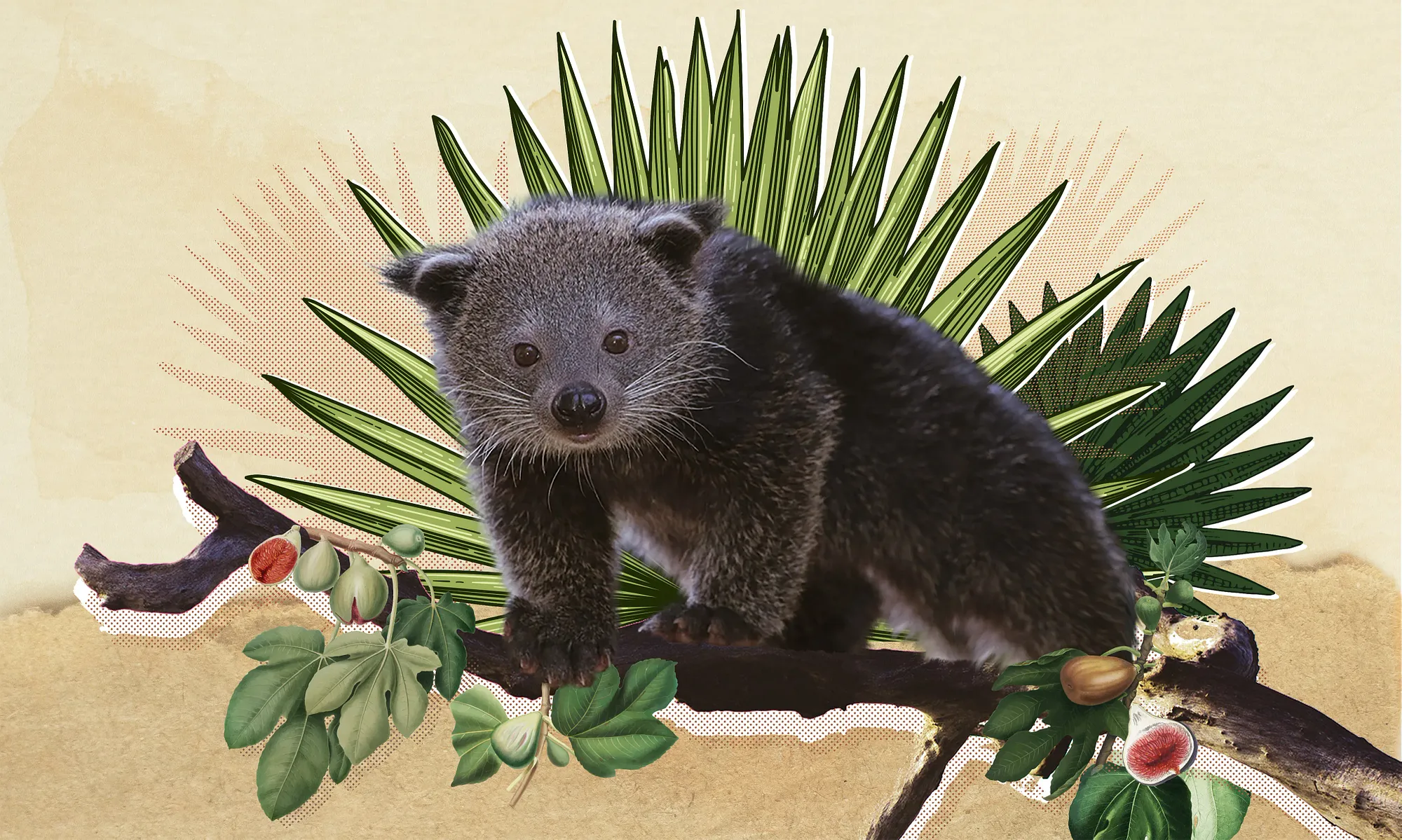The first memory I have of bồ kết was when it was concocted into something completely different from its unassuming, modest self.

It was in the early 2000s, I was a toddler, and the hair care zeitgeist in Vietnam had been turned into a tug of war between foreign corporations, all eager to capitalize on my fellow countrymen's new purchasing power. From supermarkets to mom-and-pops, shelves were brandishing colorful, plastic bottles filled with preservative-rich substances whose smells and names alluded to a certain suaveness: Enchanteur, Rejoice, Romano.

But as any wise global marketer would know, localization was the true gospel to market penetration, as evidenced by the likes of Japan’s Matcha Kit Kats, or beefless burgers in India. In Y2K Vietnam, that wisdom translated into Sunsilk Bồ Kết. Made by Unilever, the shampoo and conditioner line boasted the native fructus as its elusive ingredient on both its packaging and adverts, featuring pretty ladies with superbly animated and silky dark hair.
Sunsilk Black Shine shampoo commercial (2002–2003).
The product barely contained actual bồ kết, unsurprisingly, but it succeeded in accounting for 80% of the line’s sales at one point, and filled my cognitively immature mind with the idea that bồ kết was a force of good, capable of transforming sad, lifeless strands into Asian Rapunzel locks.
Bồ kết was a force of good, capable of transforming sad, lifeless strands into Asian Rapunzel locks.
Did you know?
In Son La Province, people from the Thai ethnic group hold an annual “Hair-washing festival” in which one of the main rituals involves washing their hair with bồ kết water.
Unbeknown to me then, hundreds of years ago, my ancestors were probably already aware of this. Before the advent of synthetic chemicals, bồ kết had been used by generations of Vietnamese for daily washing, as well as traditional medicine recipes. From skin concerns like a wicked case of dandruff to internal ailments like prolonged constipation, bồ kết can do wonders to help cleanse a person inside out.
Its tried-and-true efficacy made it to folk wisdom in the form of an old adage “Bồ kết sạch gàu, mần trầu tốt tóc,” meaning “Bồ kết gives you a clean scalp, goosegrass give you beautiful hair."

Nature’s own bubblicious legume pods
The name “bồ kết” is a vernacular term for the genus Gleditsia, a group of legume trees that are distinct thanks to their tufts of thorns growing straight from the trunks and branches, though a few thornless varieties also exist. The genus can be found as a part of wild flora in many regions of South Asia, the Americas, and Africa, but only two species have been identified as indigenous to Vietnam: Gleditsia australis and Gleditsia fera.
Both species are deciduous trees that can grow from anywhere between 3 and 24 meters tall with similar botanical and physical characteristics: they thrive in the warm and sunny weather of Vietnam's tropical climate; grow well on most of the country's diverse terrain, and produce crescent-shaped seed coats as fruits.



Gleditsia fera. Photo via Flickr user 翁明毅.
However, Gleditsia australis appears to have a symbiotic relationship with certain soil bacteria, while Gleditsia fera doesn’t. These nitrogen-fixing microorganisms, which form colonies on the roots of bồ kết trees, are capable of converting floating nitrogen in the air into a nice, hearty meal for the plants and their surrounding neighbors. And this may or may not explain why the former species is found and cultivated in many more provinces in Vietnam than its independent sibling.



A larger geographic distribution might have also resulted in more attention, and numerous publications including Vietnamese Medicinal Plants and Recipes and Encyclopedia of Vietnamese Medicinal Plants talk in-depth about the chemical make-up and real-life application of Gleditsia australis, but not of Gleditsia fera. Gleditsia australis extract is also used much more extensively in commercial products, and you will find it in the ingredient list of most bồ kết shampoos, including the narrowly qualified Sunsilk.
Regardless, we know for a fact that the fruits of both species contain a high amount of saponin, the substance that gives bồ kết its cleansing powers. The name “saponin” is derived from the Latin word “sapo,” meaning soap, as it makes foam when in contact with water. However, unlike modern surfactants such as sulfates, saponins are naturally occurring and digestible for humans, which is probably why consuming bồ kết as medicine for centuries hasn't turned us into feet-tall bubble blowers.
Bồ kết also possesses other star ingredients, such as different classes of flavonoid, an organic compound that displays antifungal, anti-inflammatory, and hair-regenerative activities. When combined, these chemical constituents create an effective means to not only reduce bodily residues, but also to fight nasty fungi that plague you with itchy scalps, while simultaneously enriching your hair.



Gleditsia australis. Photos via gbif.org.
How to make your own bồ kết shampoo at home
Such a potent elixir hasn't always come to humans prepackaged, because bottled bồ kết shampoos are very much a recent invention. For most of the time that we have known and used the plant in history, manual labor was required to extract its goodness, and it's a process that many homemakers and health gurus still swear by.
To start off, bồ kết pods need to be cooked on a grill or a wok to break down the crust and release nutritional essences. Then, they are soaked and boiled in a pot until the water turns into a caramel-hued broth, or into a more condensed liquid that can be stored for later use. Homemade recipes also call for the addition of grapefruit peels, lemongrass and holy basil to boost the mixture’s cleansing and aromatic properties, much like a chicken soup for your hair, with only plant protein.
Did you know?
It is common in certain households to burn bồ kết when moving into new homes or entering a new year as a way to “purge" bad spirits and energy.
Homemade bồ kết paste is like a chicken soup for your hair, with only plant protein.
Unlike the ferocious scrubbing that sud-based cleansers have conditioned people to perform when they stand under their showerhead, washing your hair with bồ kết is a rather ritualistic affair that is as equally soothing as it is detoxifying. One tilts their head over a container of bồ kết water, and gently rinses and combs their hair with the herby blend until it is free of oil, dirt, and stress. Bồ kết does not come with occlusive ingredients, so it does not offer the same glossy shine that supermarket shampoos do, but this is a mere trade-off for toughened strands infused with a distinct musky and ashy scent that comes from the Earth itself.


Unfortunately for bồ kết though, as cool as it is, the moment that globalization and the five-day workweek set foot in Vietnam, it began to lose its centuries-long position as the designated body care product for Vietnamese. Spending 15 minutes a day to make your own shampoo became logistically unideal for many working folks, and people’s hair gradually transitioned from a homogenous black to every single color on the spectrum, which means that the natural dyeing agent in bồ kết —tannin— was to be avoided.

Plenty of earnest attempts have been made to bring the plant back into the mainstream, but most somehow fell into the trap of gendered marketing. If one were to do a simple Google search right now, they would see that almost all bồ kết promos (including Sunsilk!) are targeted at women, showing trope-like graphics of ladies with hair so dark, so straight and so perfect it looks like it just got dry-cleaned before the shoot. Perhaps the intention was to cater to a more “traditional demographic,” but it certainly discourages those who don't fit this description, such as men or short-haired women, from exploring bồ kết as an option.
If such a wholesome plant could speak, I'm sure it would stand for inclusivity — and until the bồ kết revival gets that message, its reach remains limited. I, for one, would like to see my male colleague’s luscious curls daintily cleansed and waved like they are in those shampoo commercials. Because really, what biological distinction is there to deny all genders, in their beautiful pixie cuts, their bobs and their fros, of a refreshing bồ kết hair wash?
Illustrations by Hải Anh.
Animation by Phan Nhi.
Graphics by Hannah Hoàng, Lê Quan Thuận, and Phan Nhi.

















